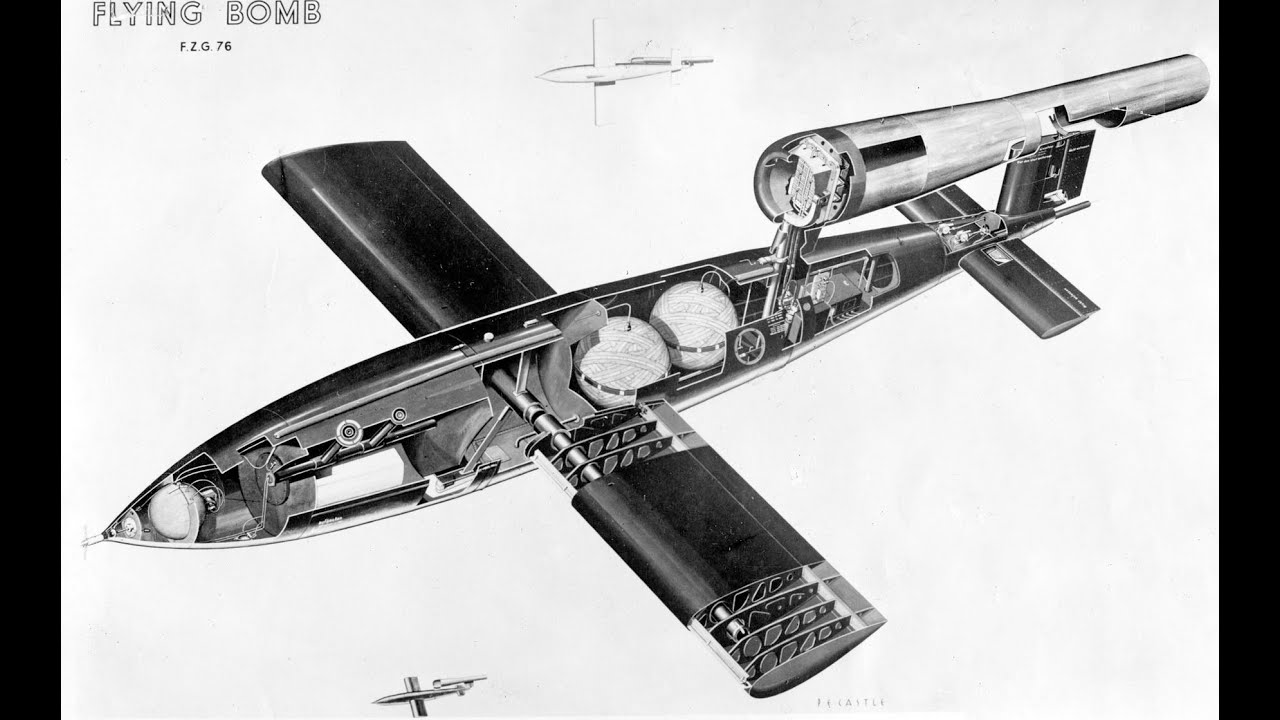Narration of this Nazi Germany Luftwaffe instructional film is in German, but subtitles in English (and a variety of other languages) are available. I have tried to turn on English subtitles, but if this doesn’t work in your browser, try the Subtitle (rounded white square) and Gear icons at the bottom right. The cover name for the V1 flying bomb was “Flakzielgerät 76 (FZG-76)” (“flak target apparatus”), concealing its offensive weapon intent. It was developed from an earlier pre-war target drone, the FZG 43/Argus As 292.
ingenious. It seems many of the same ideas still apply to modern drones and aircraft.
Indeed. The principle of gyroscopic navigation was a precursor to the inertial guidance systems eventually used in many postwar unmanned weapons. At the time, they couldn’t build a sufficiently accurate accelerometer in volume and affordable price to make a completely inertial system, so they used the propeller in the nose to provide a dead reckoning estimate of distance travelled which was sufficient for a weapon which wasn’t intended to be very accurate in the first place.
Real precision accuracy wasn’t possible until development of the TERCOM (terrain contour matching) guidance system, originally developed in the 1960s for Project Pluto, then perfected in the 1970s and 1980s for U.S. cruise missiles. This required image intelligence and computing capability which was utterly beyond the state of the art of any combatant in World War II.
GPS later changed the game again, although now many weapon designs are falling back on earlier technologies in order to operate in “GPS denied” environments.
